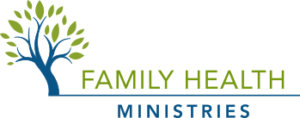Piti piti zwazo fe niche li. This old Haitian proverb literally translates to mean ‘little by little the bird builds its nest.’ This was the first Haitian proverb that Pierre taught me, and since the earthquake not a day goes by that I do not think about these words.
Just four months prior to the Haiti earthquake, I spent the summer working and living in Leogane, the city that would be the earthquake’s epicenter. At the time, I was a college student working on a project to map Leogane’s healthcare infrastructure, which is how I met Pierre. He was a young Haitian man about my age who was to be my research partner and community guide. We spent
everyday of that summer together mapping Leogane by meticulously walking each road, alleyway, blind corner, and dirt path in the city. What stands out to me above all else from that summer was Pierre’s constant appreciation of the world around him. In a town that had so little, Pierre helped me see the small things that made Leogane extraordinary. Smiling children walking to school in their bright, carefully cleaned uniforms. The intoxicating smells of fried plantains mixed with burnt sugar cane. A mango tree’s cool shade on a hot summer day. As I close my eyes I can still see Pierre as he would patiently smile and point out these beautiful everyday scenes to me.
The shaking lasted just 10 seconds, but it changed everything. In an instant, Leogane wasdestroyed. I remember watching frantically as the news unfolded out of Haiti. 7.0 magnitude earthquake. 250,000 people killed. Over one million homeless. Panic struck me. Was Pierre ok? I sent countless emails and made endless phone calls. Finally, after weeks, a brief message – “I am ok thanks to God. Please keep me in your prayers.” Upon receiving that email I knew I had
to return to Haiti. By continuing our mapping project we were in a position to significantly inform the earthquake relief effort. But more importantly in my mind, was that I simply needed to see the people and community that I had come to hold so dear and offer whatever help I could.
The destruction I saw one year after the earthquake still remains with me, as vivid now as on firstsight. The presidential palace laid in ruins. Vast tent cities extended as far as I could see. Entire blocks in Leogane were left without a single structure standing. The rubble made the street I once lived on unrecognizable. When I finally saw Pierre, even he looked older and weathered. One eye was clouded and blind and he walked with a small limp. Yet Pierre continued to emanate that
same kindness and humble tranquility.
On many nights Pierre invited me into his home for dinner and shared what little his family had. I recall sitting in his family’s crowded tent one rainy evening, with water pattering on the canvas and soaking in through the tent’s frayed edges. Pierre’s entire immediate family was present, and we spent hours laughing about old family stories, debating the significance of the upcoming presidential election, and playing Haitian card games. At one point I looked down surprised to see that my feet were soaked with mud and legs covered by mosquitoes. Surrounded by his family’s warm embrace, these minor details faded into the distance.
As the evening drew to a close, Pierre’s father asked about my own family- where we lived and how we spent time together. I tried to explain that we lived in different states, thousands of miles apart, but he was incredulous. How could anyone be so far from family, he asked? As I reassured him that this was the norm in our culture, for the first time that evening a sense of sadness came over the tent.
The juxtaposition of the joy and banter with the evenings sudden heaviness are the reasons why Iconstantly reflect now on that first Haitian proverb Pierre taught me, little by little the bird builds its nest. When I first heard it almost five years ago, I understood it literally. But as I reflect on that rainy night, I realize this proverb is not limited to the physical. Pierre, his family, and the entire community of Leogane have built a close-knit community marked by values they hold dear. Their support for one another is the nest they have built that allows them to smile and maintain faith in the face of such hardships.
As Pierre and I continued the mapping project together over the next several years, we were both shocked and delighted to discover that Leogane’s healthcare infrastructure actually improved after the earthquake. In fact, at both one and three years post-earthquake, we found a significant increase in the total number of healthcare facilities, inpatient beds, and surgical facilities serving the community. While these findings represent a real victory for Leogane and the relief effort, the numbers and maps alone fail to capture the essence of Leogane’s recovery. The way in which Pierre’s family and countless others like it have maintained and strengthened their communities in the wake of the disaster are the true measures of success in Leogane. Their stories are my inspiration as I move forward and continue to little by little build meaning, relationships, and faith in my own life.
